Key takeaways:
- Visualization techniques enhance performance by creating mental images and breaking down complex moves into manageable parts.
- Incorporating emotions and energy into visualization fosters a deeper connection and improves performance confidence.
- Practicing visualization through methods like guided imagery, visualization journaling, and mindfulness significantly boosts muscle memory and reduces performance anxiety.
- Encouraging others to visualize their dance movements can transform their approach and foster a supportive community among dancers.
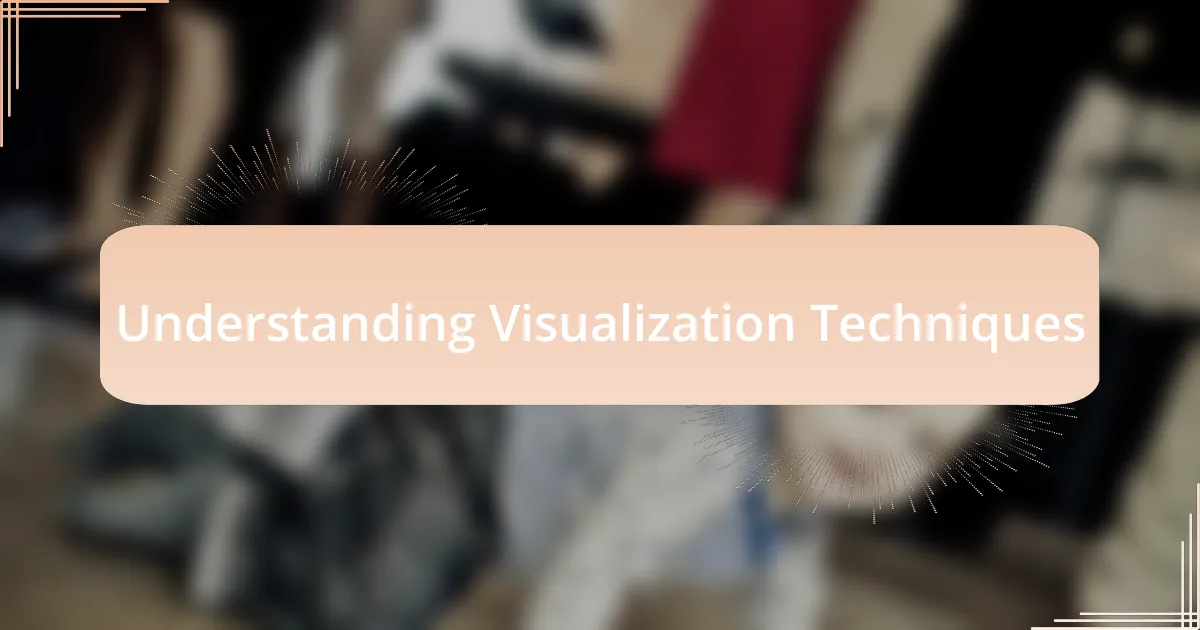
Understanding Visualization Techniques
Visualization techniques are all about creating mental images to enhance performance and focus. I still remember the first time I visualized my moves before a battle. I closed my eyes, and within moments, I could see myself effortlessly transitioning from one freeze to another, and that clarity gave me the confidence to execute it in real life. Have you ever experienced that feeling when you mentally rehearse something and then crush it on the dance floor?
By using visualization, I’ve found that I can break down tricky moves into manageable parts. For instance, when I was learning a challenging power move, I would visualize each stage: the momentum, the extension of my legs, and even where my hands had to land. This step-by-step approach isn’t just effective; it also alleviates some of the pressure that builds up during practice and competition. Picture yourself mastering a move; does that image excite you as much as it does me?
I have also discovered that incorporating feelings into visualization can amplify its impact. When I picture myself nailing a routine, I conjure up the adrenaline rush and the cheers of the crowd. This emotional connection not only reinforces my commitment but also makes the visualization feel more real. Have you noticed how emotions can elevate your practice sessions? When you truly engage with your vision, it transforms from mere imagination into a powerful tool for growth.
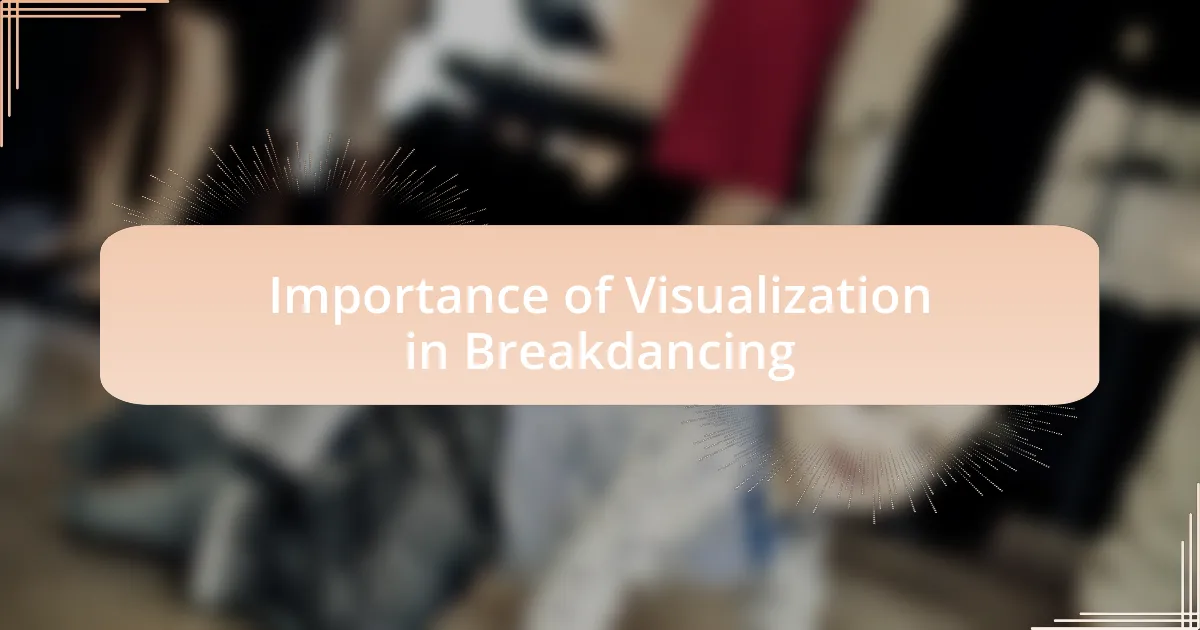
Importance of Visualization in Breakdancing
The importance of visualization in breakdancing cannot be overstated. I remember attending a workshop where the instructor emphasized how top dancers always envision their routines before hitting the floor. This technique isn’t just about seeing moves in your mind; it’s about mentally preparing for the pressure of performance, and it can truly change the game. Have you ever stepped onto the dance floor and felt nerves creeping in? Visualization can act as a shield against that anxiety.
When I’m working on choreography, I often take a moment to visualize not just the steps, but the entire energy of the performance. I think back to a time I was prepping for a big showcase. I made it a habit to spend a few quiet minutes before practice picturing the audience’s reactions—each nod, clap, and cheer. By immersing myself in that atmosphere, I felt like I was performing even before the music started. It’s incredible how those mental images helped me deliver my best when it truly mattered.
Moreover, visualization aids in building muscle memory. After a long session, when I’d put my feet up, I still replay the sequences in my mind. I’d visualize the feel of each move, which helped reinforce those connections for my body to replicate later. Have you tried this method? Creating a vivid mental playlist of your moves shapes both your technique and creativity, making your practice sessions more dynamic and enjoyable.
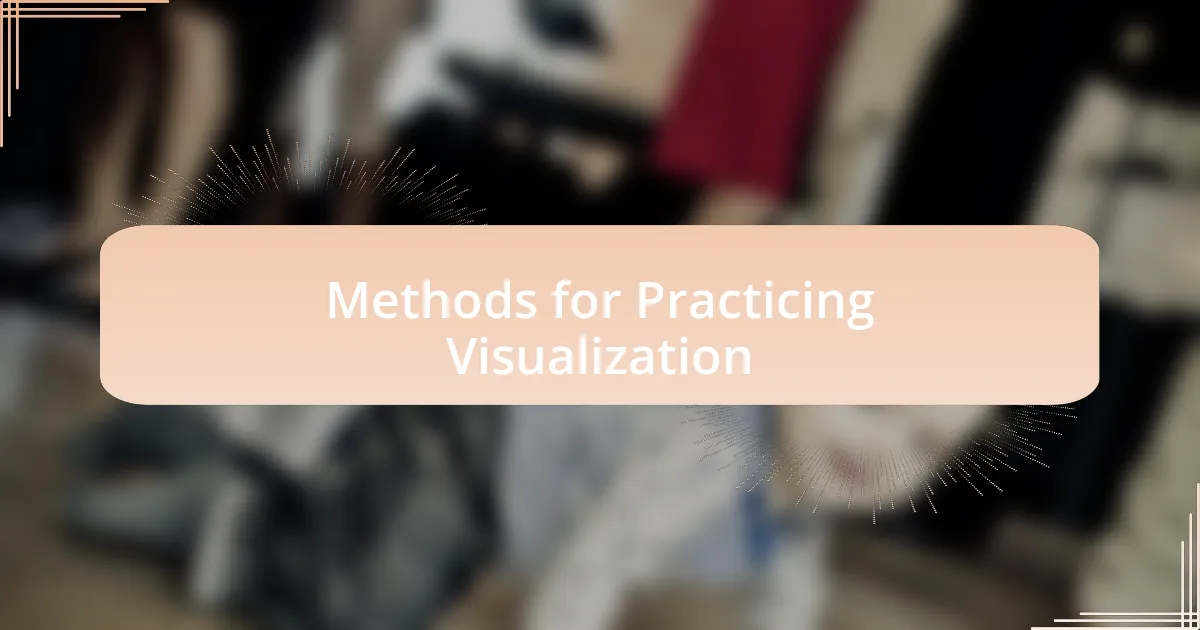
Methods for Practicing Visualization
One effective method for practicing visualization is to create a detailed mental rehearsal of your routines. I often close my eyes and imagine myself in the spotlight, fully immersed in the music. It’s not just about the choreography; I focus on the feelings I want to convey—confidence, energy, and connection with the audience. Have you ever experienced the thrill of that moment before the first move? It’s exhilarating!
Another technique that has worked wonders for me is visualizing specific challenges I might face during my performance. For example, during a particularly difficult freeze, I mentally replay the move, picturing my body executing it flawlessly. This practice not only prepares me mentally but also helps reduce the fear of failure. It’s amazing how visualizing success can transform your mindset. What if that one mental image could turn a tough routine into a seamless performance?
Finally, I like to pair visualization with physical practice. As I go through the physical motions, I also picture the execution in my mind—almost as if I’m dancing both in reality and in my imagination simultaneously. This dual approach reinforces my learning, embedding the moves more firmly in my brain. Have you tried dancing with a mental soundtrack running in your mind? It can revolutionize your practice and deepen your connection to each move you make.

Techniques I Use in Visualization
When it comes to visualization, I often use the technique of guided imagery. I’ll find a quiet space, close my eyes, and listen to my favorite breakdancing tracks while picturing myself executing complex moves with precision. Imagining how the rhythm pulses through my body makes the whole experience feel more vibrant and alive. Have you ever felt music transport you to a different place? It’s like immersing yourself in a dance dream.
Another method I rely on is creating a visualization journal. After particularly intense practice sessions, I sit down with a notebook and jot down the key moments I visualized during my training. I describe not just the moves but also the emotions I felt at each stage. This reflection solidifies my experiences and helps me identify areas for improvement. It’s intriguing how writing about my mental experience can deepen my understanding of the physical one, don’t you think?
Moreover, I often incorporate mindfulness into my visualization practice. By focusing on my breath and calming my mind, I’m able to clear out distractions and vividly picture each step of my routine. It’s a powerful way to connect my mind and body more deeply. When I center myself, I can almost feel the energy radiating from the crowd, making each visualization more profound. Have you noticed how presence can amplify your practice? It’s a game-changer!
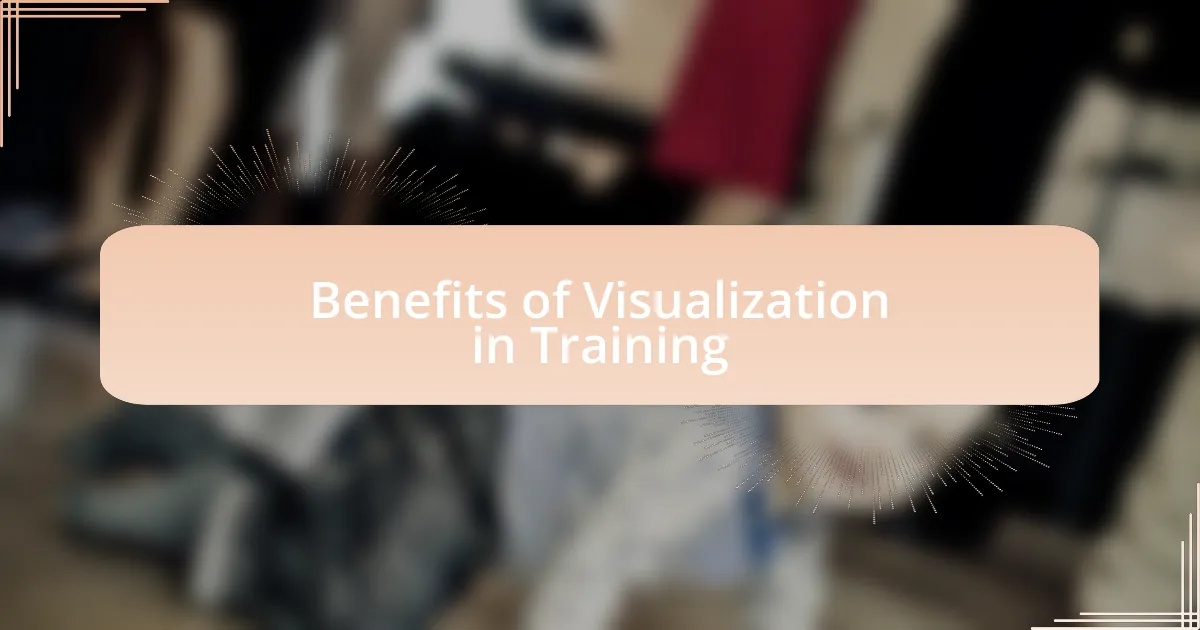
Benefits of Visualization in Training
The benefits of visualization in training are profound and far-reaching. For instance, during a particularly difficult session last year, I envisioned nailing a challenging freeze. When I finally tried it, the move felt effortless, almost as if I had already executed it a hundred times in my mind. Have you ever experienced that moment when your mental preparation leads to physical success? It’s magical.
I’ve also noticed that visualization helps alleviate performance anxiety before battles. When I picture myself confidently facing the judges and the crowd, the fear dissipates, replaced by a sense of excitement. I remember one competition where I was surprisingly calm because I had visualized my routine countless times. Do you think picturing success can actually make us more resilient in high-pressure situations? From my experience, it absolutely does.
Additionally, visualization promotes clarity in my movements. By mentally rehearsing transitions and freezes, I can refine each detail in my mind before bringing it to life on the dance floor. I once spent an entire week visualizing a challenging routine, and when I finally performed it, every move felt like second nature. Can you see how this practice recreates muscle memory even before stepping onto the mat? It’s like training my mind to master my body.
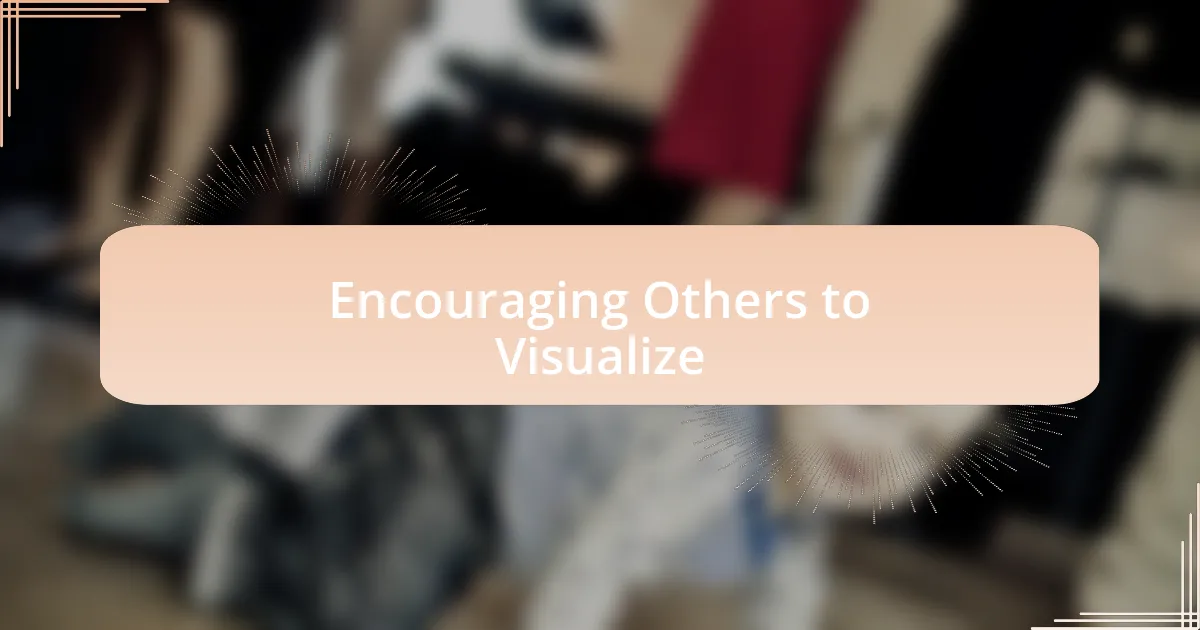
Encouraging Others to Visualize
Encouraging others to visualize can really transform their approach to breakdancing. I often tell my friends to close their eyes and imagine executing their favorite move perfectly. Recently, I coached a fellow dancer who struggled with confidence, and as she pictured herself soaring through a windmill flawlessly, I could see her demeanor shift. Has anyone else noticed how a simple mental exercise can spark a newfound determination?
Sharing personal stories about visualization also helps bridge that gap. I once led a workshop where I invited participants to visualize their journey as dancers, from their first steps to landing complex tricks. By the end, many expressed how motivating it felt to see their growth potential laid out in their minds eye. Isn’t it interesting how visualization not only fuels individual aspirations but also strengthens our community?
Creating a culture of visualization within our crew can be powerful. During practice sessions, I encourage everyone to take a moment to visualize their goals before we start. Just the other day, I saw one of my teammates successfully land a move he had only imagined moments before. Can’t you feel the energy shift when we collectively engage in this practice? It solidifies our bond and pushes each of us to reach for new heights.